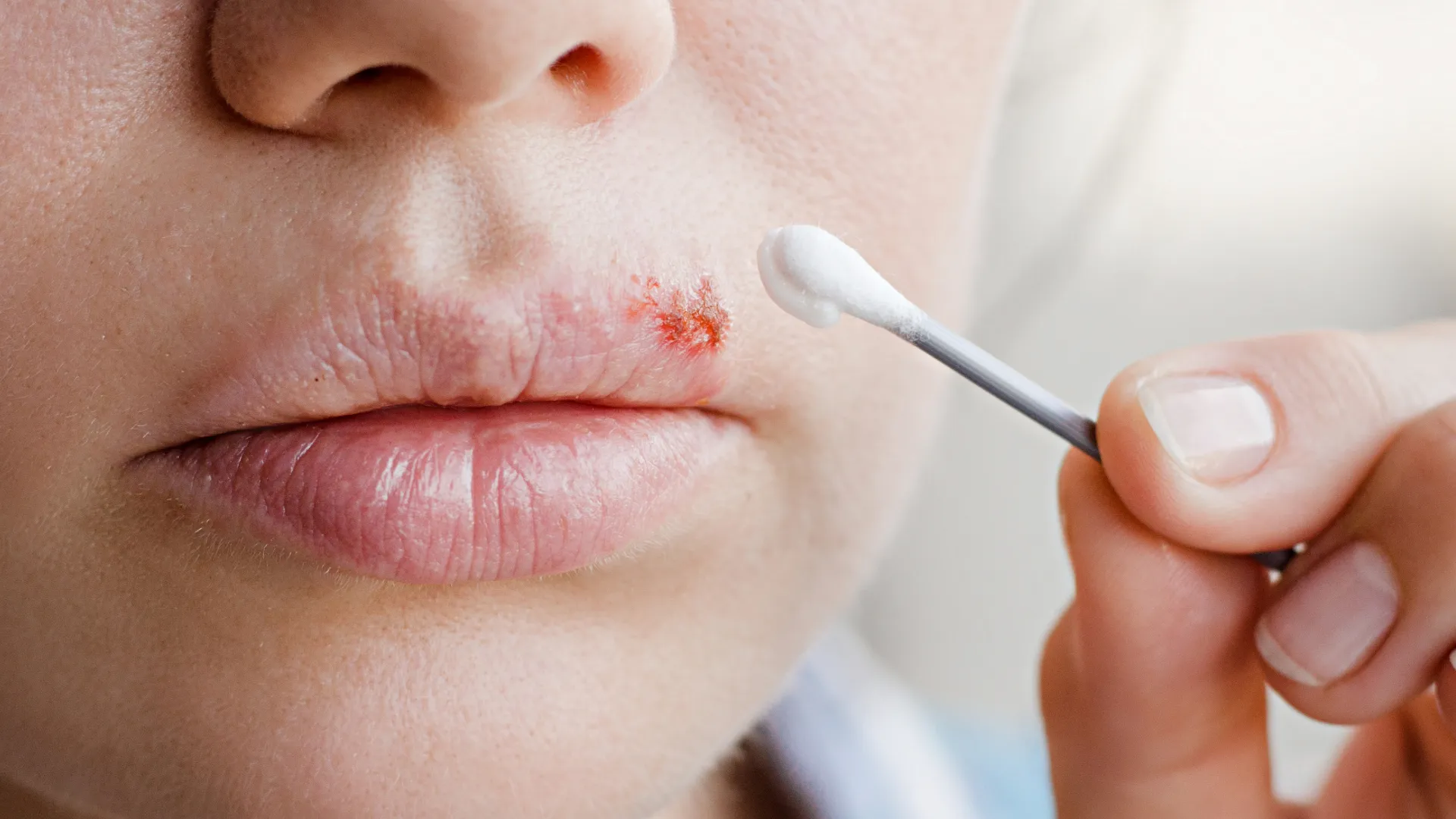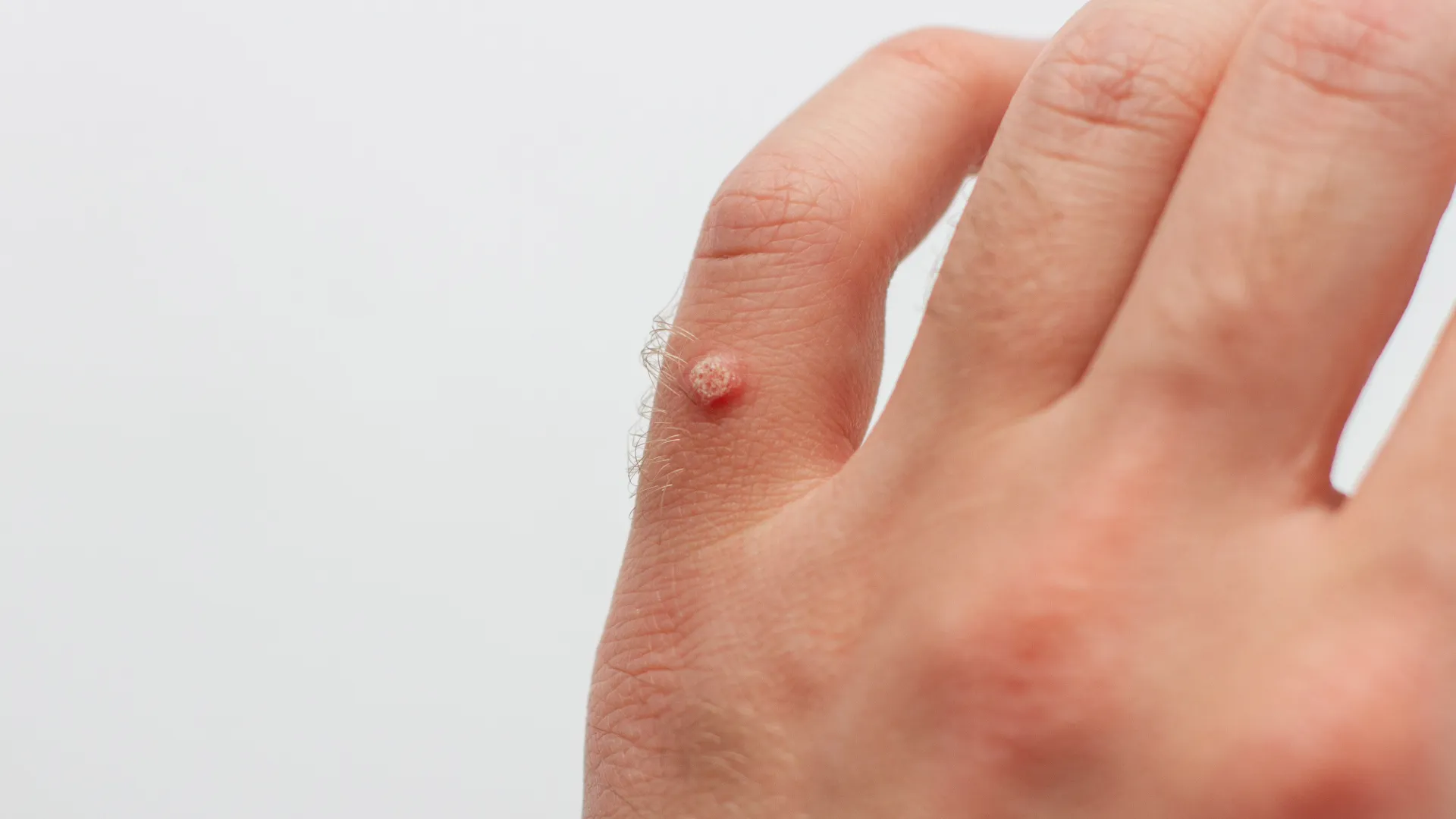Simple Herpes
Overview
Herpes simplex virus (HSV) infections are caused by two distinct types of the virus: HSV-1 and HSV-2. Typically, HSV-1 affects the facial region, primarily the lips (commonly known as cold sores), while HSV-2 generally targets the genital area (genital herpes). However, both types can occasionally affect other areas of the body.
Clinical Presentation
Oral Herpes (HSV-1)
Oral herpes manifests as multiple painful blisters on a red, inflamed base, often accompanied by itching and burning sensations. Within a few days, these blisters may dry out and form crusts. Typically, lesions resolve within 2-3 weeks without scarring.
Many individuals experience asymptomatic primary infections with HSV-1. If symptoms do arise, they usually appear 3-7 days post-infection and can include:
- Painful swollen lymph nodes
- General malaise
- Loss of appetite
- Fever
- Burning sensations
In children, the initial infection often presents as herpes gingivostomatitis, characterized by:
- Fever
- Oral mucosal erosions
- Painful lymphadenopathy
- Pharyngitis
In young adults, primary infection often leads to multiple painful blisters on the lips, with possible erosions in the oral mucosa.
Genital Herpes (HSV-2)
Primary infection with HSV-2 typically displays a pronounced clinical picture, featuring multiple blisters in the genital region, pubic area, buttocks, or around the anus. Symptoms may include:
- Erythema and swelling in the affected area
- Severe vulvovaginitis, cervicitis, or urethritis in women
- Accompanying systemic symptoms such as fever, swollen lymph nodes, and muscle aches
Recurrences
Recurrences of herpes simplex are generally less severe and usually do not present systemic symptoms. Lesions are localized and resolve more quickly. Common sites for recurrent herpes include:
- Lips
- Nasal mucosa
- Cheeks
- Sacrococcygeal area
- Fingers
Transmission
HSV is transmitted through direct contact between individuals or via autoinoculation from the affected area to other body parts. Genital herpes is classified as a sexually transmitted infection and can be transmitted through skin-to-skin contact or infected secretions. For transmission to occur, there must be a break in the skin or mucous membrane allowing the virus to establish itself.
Recurrence Triggers
After the initial infection, the virus remains dormant in nerve cells and can reactivate under various triggers, including:
- Stress
- Fever
- Immunosuppression
- Menstruation
- Viral infections
- Cold exposure
- UV radiation
Patients with malignancies or compromised immune systems may experience more frequent and severe recurrences.
Treatment
Topical Medications
Antiviral and antiseptic medications help alleviate symptoms during outbreaks.
Systemic Treatment
Oral medications such as acyclovir, valacyclovir, or famciclovir can reduce the severity and duration of symptoms. They should ideally be administered within the first 72 hours of the onset of symptoms.
Pain Management
Pain relief may be necessary for discomfort.
For individuals with frequent recurrences, long-term suppressive therapy with antiviral medications is recommended, although the virus may still reactivate after treatment concludes.
Prevention
Prevention strategies depend on the location of the herpes outbreak. General guidelines include:
- Refrain from physical contact with the infected area to prevent spreading the virus to others
- Always wash your hands thoroughly after applying topical treatments
- Use clean cotton swabs to apply medications to avoid direct contact with the lesions
- Using barrier methods during sexual activity
- Do not share personal items that could carry the virus, such as:
- Towels
- Lip balms
- Drinking glasses
- Utensils
- Clothing
- Makeup products
Additionally, maintaining overall health and a strong immune system can help reduce the frequency of outbreaks.


